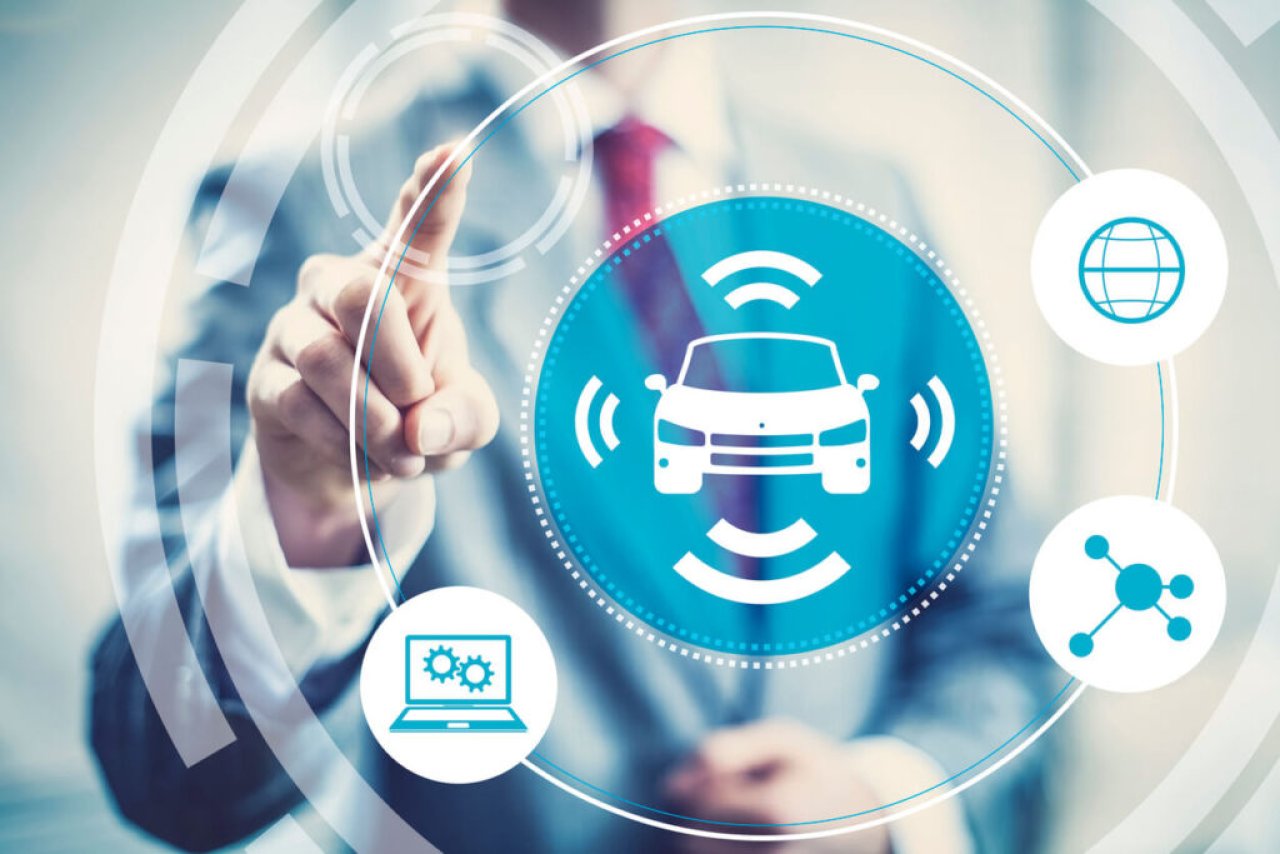
Introduction
With enthusiasm, let's navigate through the intriguing topic related to The Rise of Usage-Based Insurance: A New Paradigm for Motorists. Let's weave interesting information and offer fresh perspectives to the readers.
Table of Content
The Rise of Usage-Based Insurance: A New Paradigm for Motorists
The traditional model of car insurance, based on static factors like age, location, and vehicle type, is showing signs of strain. As technology evolves and data becomes more readily available, a new paradigm is emerging: usage-based insurance (UBI). This innovative approach utilizes telematics, the use of technology to collect and analyze data from vehicles, to tailor premiums based on individual driving behavior. While still in its early stages, UBI holds immense potential to revolutionize the insurance industry, offering benefits for both insurers and policyholders.
Understanding the Mechanics of UBI
At its core, UBI relies on telematics devices, typically small black boxes installed in vehicles, to gather data on driving habits. These devices capture information such as:
- Mileage: The total distance driven, a key factor in traditional insurance models.
- Time of Day: Driving during peak hours can increase the risk of accidents, influencing premium calculations.
- Speed: Excessive speed is a major contributor to accidents, making it a crucial metric in UBI.
- Hard Braking and Acceleration: Sudden and aggressive maneuvers indicate a higher risk of accidents.
- Location: Driving in high-risk areas, like urban centers, can impact premiums.

This data is then analyzed by sophisticated algorithms to generate a personalized risk profile for each driver. Policyholders with safer driving habits, characterized by lower mileage, responsible speeds, and fewer risky maneuvers, are rewarded with lower premiums. Conversely, those with riskier driving patterns may see their premiums increase.
The Benefits of UBI for Policyholders
UBI offers several compelling advantages for drivers:
- Personalized Pricing: The most significant benefit is the potential for lower premiums. By demonstrating safe driving habits, individuals can unlock discounts that are not available through traditional insurance models.
- Increased Awareness: The constant feedback on driving behavior provided by UBI encourages drivers to adopt safer habits, ultimately leading to a reduction in accidents and injuries.
- Enhanced Safety Features: Some UBI programs incorporate safety features like emergency assistance, roadside assistance, and stolen vehicle tracking, adding value beyond just cost savings.
- Greater Control: Drivers have more control over their insurance premiums by actively modifying their driving habits and directly influencing the cost of their coverage.
The Advantages of UBI for Insurers
UBI also presents significant benefits for insurance companies:
- Accurate Risk Assessment: By leveraging real-time driving data, insurers gain a much deeper understanding of individual risk profiles, leading to more precise and equitable premium calculations.
- Reduced Fraud: UBI technology can help detect and deter fraudulent claims by providing objective evidence of driving behavior.
- Improved Customer Retention: By offering personalized pricing and value-added services, insurers can foster greater customer satisfaction and loyalty.
- Enhanced Risk Management: UBI data can be used to identify and address potential risks proactively, leading to safer roads and fewer accidents.
Illustrative Examples
The impact of UBI on premium pricing can be illustrated with a simple example:
| Driver | Traditional Premium | UBI Premium |
|---|---|---|
| Sarah, a young driver with a clean record | $1,500 | $1,200 |
| John, an older driver with a history of speeding violations | $1,800 | $2,100 |
In this scenario, Sarah benefits from UBI due to her safe driving habits, while John faces higher premiums because his driving behavior poses a greater risk.
Challenges and Concerns
While UBI offers numerous advantages, it also faces certain challenges:
- Privacy Concerns: The collection and analysis of personal driving data raise privacy concerns, as it can potentially be used for purposes other than insurance.
- Data Security: Ensuring the security and confidentiality of sensitive driving data is paramount to prevent breaches and misuse.
- Technical Complexity: Implementing and maintaining sophisticated telematics systems requires significant investment and technical expertise.
- Public Acceptance: Building trust and acceptance among the public is crucial for the widespread adoption of UBI.
The Future of UBI
Despite these challenges, UBI is rapidly gaining traction globally. The increasing availability of affordable telematics devices and the growing demand for personalized pricing are key drivers of its adoption. As technology continues to evolve, we can expect further innovations in UBI, including:
- Integration with Connected Vehicles: Future UBI programs will likely be integrated with connected car technology, enabling even more detailed and accurate data collection.
- Predictive Analytics: Advanced algorithms will be used to predict future driving behavior and personalize premiums accordingly.
- Personalized Safety Recommendations: UBI platforms can provide drivers with personalized feedback and recommendations to improve their driving habits and reduce risks.
Conclusion
Usage-based insurance represents a significant shift in the insurance industry, offering a more equitable and efficient way of pricing car insurance. By leveraging technology and data, UBI empowers drivers to take control of their premiums and encourages safer driving practices. While challenges remain, the potential benefits of UBI are undeniable, making it a promising solution for a future where insurance is more personalized, transparent, and data-driven.
Figure 1: Illustrative Comparison of Traditional and UBI Premiums
This figure illustrates how UBI can lead to significant differences in premium pricing based on individual driving behavior.
Table 1: Key Features of Traditional and UBI Insurance
| Feature | Traditional Insurance | UBI Insurance |
|---|---|---|
| Pricing Basis | Static factors (age, location, vehicle type) | Driving behavior |
| Data Collection | Limited data (driving history, claims) | Real-time telematics data |
| Premium Adjustment | Periodic adjustments based on claims history | Continuous adjustments based on driving behavior |
| Transparency | Limited transparency on premium calculation | Transparent feedback on driving behavior and premium impact |
| Customer Control | Limited control over premium | Greater control through driving habits |
Diagram 1: The UBI Ecosystem
This diagram illustrates the key components of a typical UBI system, including the telematics device, data collection, analysis, and premium calculation.

Related Articles:
- Navigating The SR-22: A Guide To High-Risk Car Insurance
- The All-Encompassing Shield: Demystifying Full Coverage Car Insurance
- The Wild World Of Car Insurance: Navigating The Labyrinth Of Coverage
- The Price Of Freedom: A Deep Dive Into Teen Driver Car Insurance
- The Safety Net: Understanding Liability Car Insurance
Closure
Thus, we hope this article has provided valuable insights into The Rise of Usage-Based Insurance: A New Paradigm for Motorists. We hope you find this article informative and beneficial. See you in our next article!
'Insurance' 카테고리의 다른 글
| The Price Of Freedom: Driving Without Car Insurance (1) | 2024.07.25 |
|---|---|
| Filling The Gap: A Comprehensive Guide To Gap Insurance (1) | 2024.07.24 |
| Driving Into Uncertainty: Navigating Rental Car Reimbursement (0) | 2024.07.22 |
| Navigating The Maze: A Guide To Car Insurance Quotes (0) | 2024.07.21 |
| Filling The Gap: A Comprehensive Guide To Gap Insurance (0) | 2024.07.21 |